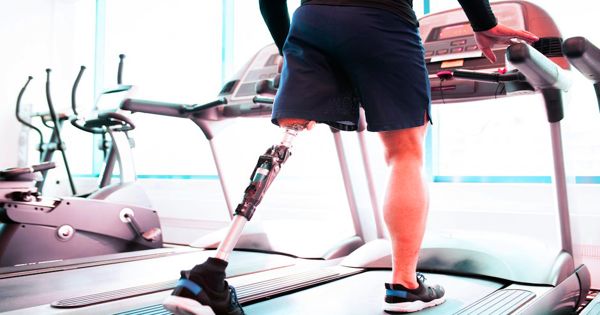In a new study, researchers from North Carolina State University recorded that a soft, versatile sensor device with electrically conductive yarns could help map troublesome pressure points in the amputee prosthetic limb socket. In the IEEE Sensors Journal, researchers from North Carolina State University published on a lightweight, soft textile prototype sensor patch. The unit contains a lattice of conductive yarns and is attached to a small machine. They tested the device on the prosthetic limb and in walking trials with two human participants, showing the system could detect pressure changes accurately in real-time.
The team consisted of clothing, electronic, computer, and biomedical researchers from the NC State. The first author of the research, Jordan Tablor, a graduate student at the NC State College of Textiles, explained that rigid sensors are widely used to calculate prosthetic pressure.
Researchers from North Carolina State University have developed a new soft flexible sensor system aiming to map pressure points for amputees.
“What people commonly use to measure the pressure within prosthetics are rigid sensors,” said Jordan Tabor, the first author of the research, a graduate student at the NC State College of Textiles. “They’re hard, they’re bulky; they can be heavy. These are not things that amputees can use on a daily basis because rigid sensors negatively affect the fit of amputees’ prosthetics. Rigid sensors can also cause discomfort. We designed sensors that can be integrated into textiles in a way that doesn’t cause any additional discomfort for the user, and could be worn on a more regular basis.”
In one experiment, the researchers checked whether the patch could sense variations in pressure as it was put on an artificial limb, rotated at various angles. Then they used it to test pressure shifts when a competent person wearing a sensor patch while walking with a bent-knee adapter and moving their weight between the legs.

In their last trial, a volunteer with an amputated lower leg wore a patch on the liner of his prosthetic arm in places where prosthetics usually exert higher strain. They checked the sensor patch as the volunteer moved weight and walked on the treadmill, and found that the device was robust and could accurately track the pressure shifts in the socket.
“This approach that we thought of a few years ago does work, and it’s a readily manufacturable technology,” said Tushar Ghosh, the co-author of the report. “You cannot put materials next to the skin that is uncomfortable and may not be safe. So we are putting things that are used around us all the time and are soft and flexible.” Ghosh is William A. Klopman, Professor of Textile Engineering, Chemistry & Science at Wilson College of Textiles, NC State.
Part of the research work included the construction of the sensor device to be lightweight and compact enough for human use. The thesis was a partnership between textile, electrical, computer, and biomedical researchers at the NC State. Human studies were undertaken by Recovery Engineering Researchers headed by Helen Huang, Jackson Family Distinguished Professor at the UNC/NC State Joint Department of Biomedical Engineering and a senior co-author of the study.
The sensor patch was created by stitching the yarns together in such a way that an electromagnetic field was created. When the researchers sewed the yarns into the lattice and added a small amount of electrical power using a small battery, they discovered that they could quantify the amount of electrical charge by drawing the yarns together at each lattice point. Charges differ based on how tight the yarns are together, which is related to how much strain the wearer is applying. They attached yarns, insulated them, put them on a cloth fabric, and connected them to a small electronic data collection unit. They also provided a small radio to monitor the measurements wirelessly.
“We connected the textile fibers to an electrical circuit that is a little larger than a quarter, and that can scan as many as 10 by 10 fibers,” said the study’s co-corresponding author Alper Bozkurt, professor of electrical engineering at NC State. “That gives us 100 points of measurement. Everything is connected to a tiny microcomputer, which has a radio for wireless data tracking.”
Although researchers used wool commercially available for the analysis, they are also focusing on designing their own textile fiber to detect more than just strain shifts in the amputee’s prosthetic limb socket. The next step in the project is to insert the sensors directly into the prosthetic sockets or into the wearable component. They will still need to research the possible therapeutic utility of the sensor in a broader study.
“Our broader vision is to design something like a sock, or to integrate the sensor system into the prosthetic socket, so when a person dons their prosthesis, they are able to monitor what’s happening in terms of pressure distribution and other measurements,” Huang said.
Researchers have said that they are now focusing on producing their own textile fiber to detect more than just strain shifts in the prosthetic limb socket. The next step is to insert the sensors directly into the prosthetic sockets or into the wearable component.















